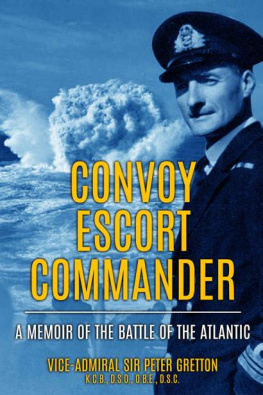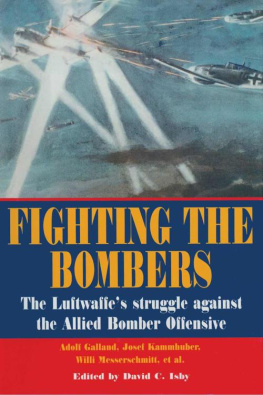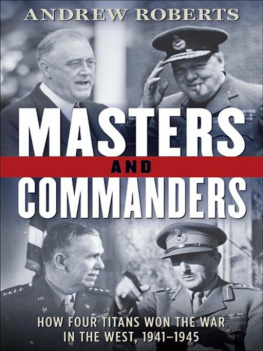Alan Burn - Fighting Commodores Convoy Commanders In
Here you can read online Alan Burn - Fighting Commodores Convoy Commanders In full text of the book (entire story) in english for free. Download pdf and epub, get meaning, cover and reviews about this ebook. year: 1999, publisher: Leo Cooper Ltd, genre: Business. Description of the work, (preface) as well as reviews are available. Best literature library LitArk.com created for fans of good reading and offers a wide selection of genres:
Romance novel
Science fiction
Adventure
Detective
Science
History
Home and family
Prose
Art
Politics
Computer
Non-fiction
Religion
Business
Children
Humor
Choose a favorite category and find really read worthwhile books. Enjoy immersion in the world of imagination, feel the emotions of the characters or learn something new for yourself, make an fascinating discovery.

Fighting Commodores Convoy Commanders In: summary, description and annotation
We offer to read an annotation, description, summary or preface (depends on what the author of the book "Fighting Commodores Convoy Commanders In" wrote himself). If you haven't found the necessary information about the book — write in the comments, we will try to find it.
Fighting Commodores Convoy Commanders In — read online for free the complete book (whole text) full work
Below is the text of the book, divided by pages. System saving the place of the last page read, allows you to conveniently read the book "Fighting Commodores Convoy Commanders In" online for free, without having to search again every time where you left off. Put a bookmark, and you can go to the page where you finished reading at any time.
Font size:
Interval:
Bookmark:
The Fighting Captain (Leo Cooper, 1993)
by
Royal Navy, but on the merchant ships that actually carry
(the) basic requirements, both in peace and in war.
A.T. Mahan

Leo Cooper
an imprint of
Pen & Sword Books Ltd
47 Church Street
Barnsley
South Yorkshire
S70 2AS
ISBN 0 85052 504 7
available from the British Library.
Phoenix Typesetting, Ilkley, West Yorkshire
Trowbridge, Wilts
| A/S | Anti-submarine |
| BdU | Befehlshaben der U-boote (U-boat Command) |
| COMINCH | C-in-C United States Fleet |
| Connav | Convoy Navigator |
| DBS | Distressed British Seaman |
| DCNS | Deputy Chief of the Naval Staff |
| DEMS | Defensively Equipped Merchant Ship |
| D/F | Direction Finding |
| DNI | Director of Naval Intelligence |
| EG | Escort Group |
| FAT | Federapparattorpedo |
| HF/DF | High Frequency Direction Finding |
| HO | Hostilities Only |
| LST | Landing Ship Tank |
| NCSO | Naval Control Service Operation |
| OIC | Operational Intelligence Centre |
| OOW | Officer of the Watch |
| RCN | Royal Canadian Navy |
| RMO | Recruitment and Manning Organization |
| RNB | Royal Naval Barracks |
| RNLI | Royal Naval Lifeboat Institution |
| RNR | Royal Naval Reserve |
| RNVR | Royal Naval Volunteer Reserve |
| Sigint | Special Intelligence derived from Ultra decrypts |
| SOE | Senior Officer of Escort |
| VLR | Very Long Range (aircraft) |
| WOMP | Western Ocean Meeting Point |

Eaglet, the shore base of the Royal Naval Reserve
in Liverpool in 1971.
Font size:
Interval:
Bookmark:
Similar books «Fighting Commodores Convoy Commanders In»
Look at similar books to Fighting Commodores Convoy Commanders In. We have selected literature similar in name and meaning in the hope of providing readers with more options to find new, interesting, not yet read works.
Discussion, reviews of the book Fighting Commodores Convoy Commanders In and just readers' own opinions. Leave your comments, write what you think about the work, its meaning or the main characters. Specify what exactly you liked and what you didn't like, and why you think so.








